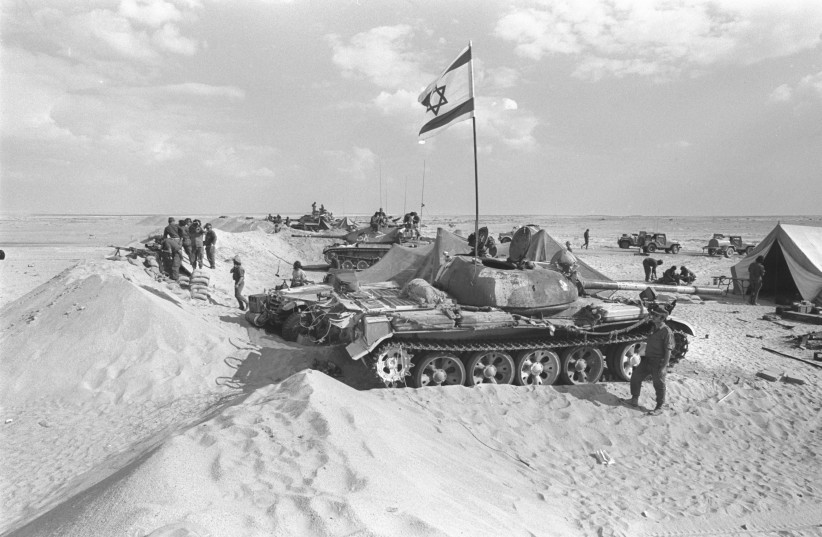“In the early afternoon of Yom Kippur, the Day of Atonement, on October 6, 1973, alarm sirens interrupted the silence of the fast, and the signal was given for the start of the Yom Kippur War, which has become a national trauma in Israel’s history. Although the war ended with military victories, 2,656 soldiers were killed, hundreds were taken prisoner, and over 7,200 soldiers and civilians were wounded. The fighting and its results were unbearably difficult for a country that just a few months earlier had celebrated its 25th Independence Day.”
This is the introduction to the newly declassified material from the Israel State Archives that has been posted on its website in accordance with a government decision ahead of the 50th anniversary of the Yom Kippur War. It comprises some 3,500 files, including about 1,400 paper files, 1,000 photographs, 800 audio clips, 150 transcripts, and eight videos.
The Israel State Archives (www.archives.gov.il/en/), which is part of the Prime Minister’s Office, said it has been working for the past two and a half years on making the files that tell the story of the Yom Kippur War – on the front lines, on the home front, and in the government – accessible to the public. “For the first time, it is possible to use original documents in order to research and feel the drama and the emotions among the public, the IDF, and the leadership, comprehensively and directly,” it said. “Some of the material relays the events minute by minute and allows us to relive the feelings of those who were present at the events.”
What has been declassified from the Yom Kippur War?
There are audio clips and photographs; transcripts and original files from government ministries and the military; diplomatic documents and testimonies; protocols of government and war cabinet meetings; high-level discussions and civil defense assessments; information on the home front; and much more.
This material, most of which was previously classified, has been checked and scanned, and cleared by the censor. It is now available as an archival collection of information on the war, beginning with decision-making by the country’s leadership in a time of uncertainty; the fighting on the various fronts; the Israeli home front; diplomatic contacts with Arab states; and mediation by the major powers until the 1974 Separation of Forces Agreement.

The documents provide records of deliberations between then-prime minister Golda Meir and security chiefs in the days before Syria and Egypt launched a coordinated attack on October 6, 1973. A day before, Military Intelligence Directorate chief Eli Zeira (who turned 95 this year) signaled that the intelligence establishment did not have enough information on a planned attack by the Egyptians and the Syrians. “I must say, we don’t have sufficient proof that they don’t intend to attack,” he said. “We don’t have conclusive indications that they want to attack, but I can’t say based on knowledge that they aren’t preparing.”
Chief Archivist Ruti Abramovitz said the State Archives had endeavored to show “the 360-degree story of the war,” which affected every facet of life in Israel.
“The work to reveal the material was done by many employees,” she said. “This is the largest effort of its kind that the State Archives has ever undertaken...I invite the public to search for personal information, listen to the audio clips that can take us back in time, turn to the State Archives with requests for assistance if needed, and to look for answers to the open, and perhaps still bleeding, questions.”
The State Archives said the collection offers “a fascinating glimpse into the decision-making process under conditions of uncertainty.” For those interested in learning more about the Yom Kippur War, material can be accessed at https://catalog.archives.gov.il/en/publication/ykw-en/
